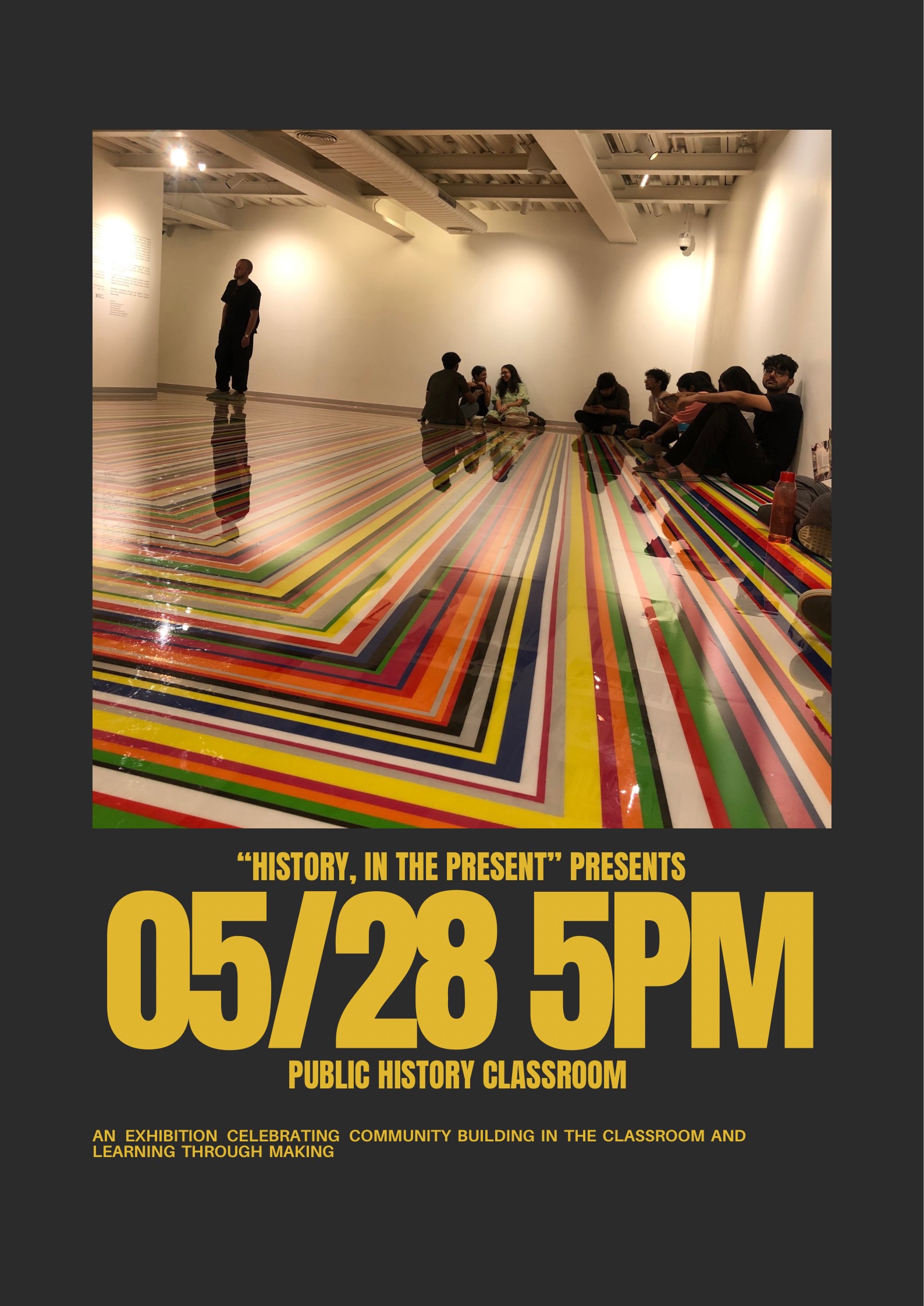NLSIU Class Exhibition of ‘History, in the Present’
OAB 105
Tuesday, May 28, 2024, 5:00 pm
Open only to the NLS community.
The class exhibition of the “History, in the Present” seminar at NLSIU, opens on Tuesday, May 28, between 5-6 PM at OAB 105. This preview will include a screening of the flagship exhibit followed by celebrations and reflections on the work done by students and the instructor Dr. Samyak Ghosh, during the trimester.
Following the preview, for the next two days, multiple exhibits are open to viewing at various locations across the campus, where those viewing can interact with the exhibits and share their reflections.
On May 30 (Thursday), an open house history telling event will be organized in the OAB 105, between 2:30-4:40 PM. The event also marks the closing of the exhibition.
Introduction

The theme for the class exhibition of the Public History Seminar, AY 2024-2025, is “Anti-classroom Classroom”. Through several exhibits displayed at multiple sites throughout the NLSIU campus the students along with the instructor will explore how we can break down and rethink the classroom as a space and an idea.
Our point of divergence is the traditional classroom where the instructor and the institution are merged as sites of authority. “Anti-classroom Classroom” is not necessarily a critique of the traditional classroom but an effort to imagine and practice alternative forms of pedagogy that are in alignment with community-based learning and making and knowing as co-constitutive practices. The alternative imagination allows us to push boundaries of knowledge making in the classroom as we rethink what we do and where we do.
This is an endeavour in reassembling and reordering learning through practice-based reflection on the work that takes place in a Public History classroom. As an area of inquiry, Public History makes us think of the classroom beyond university spaces, to include spaces of public interaction like streets, neighbourhoods, monuments, museums, and much more.
One iteration of public history is to imagine the possibilities of history communication outside the traditional lecture and seminar based classrooms of universities. In doing so, the effort is also to focus on forms of knowledge making that exist in collective thinking, sharing of ideas, and making together as a community. This knowledge, as we acknowledge, is embedded in a space of public interaction and continuous interpretation. We expect that the audience will interact with our exhibits in ways that will expand our ideas of shared learning.
The full details of the exhibition are available here.

